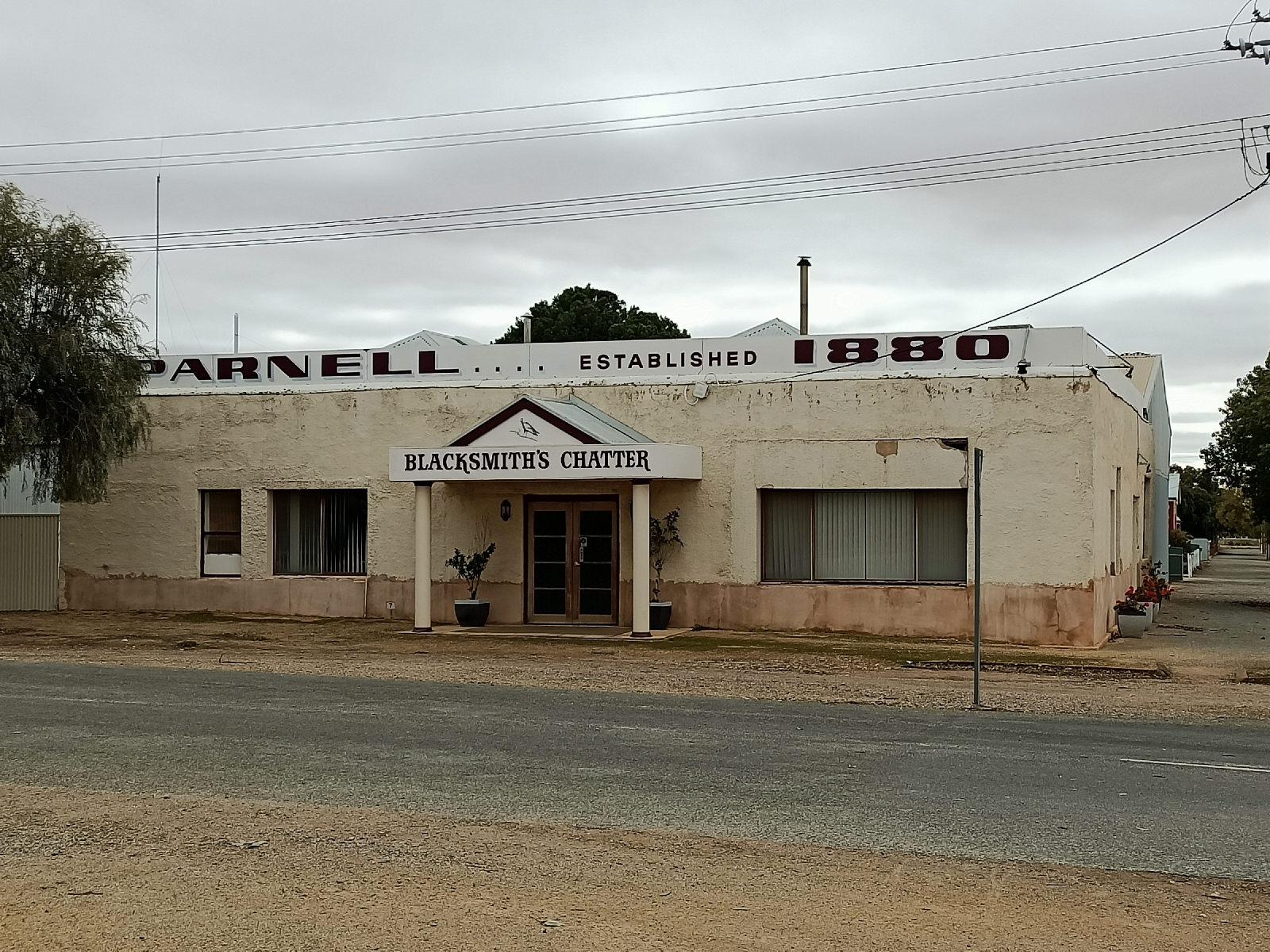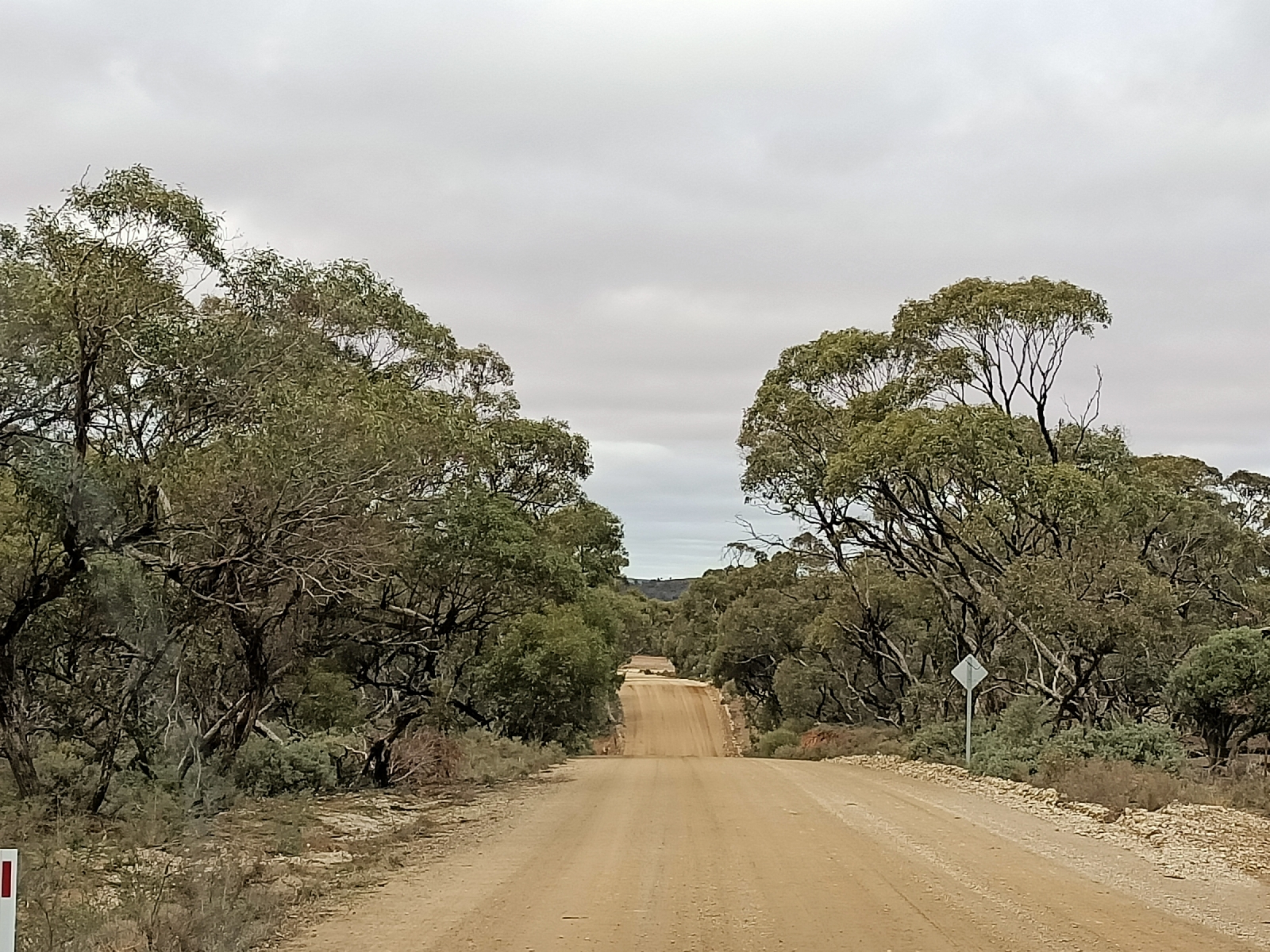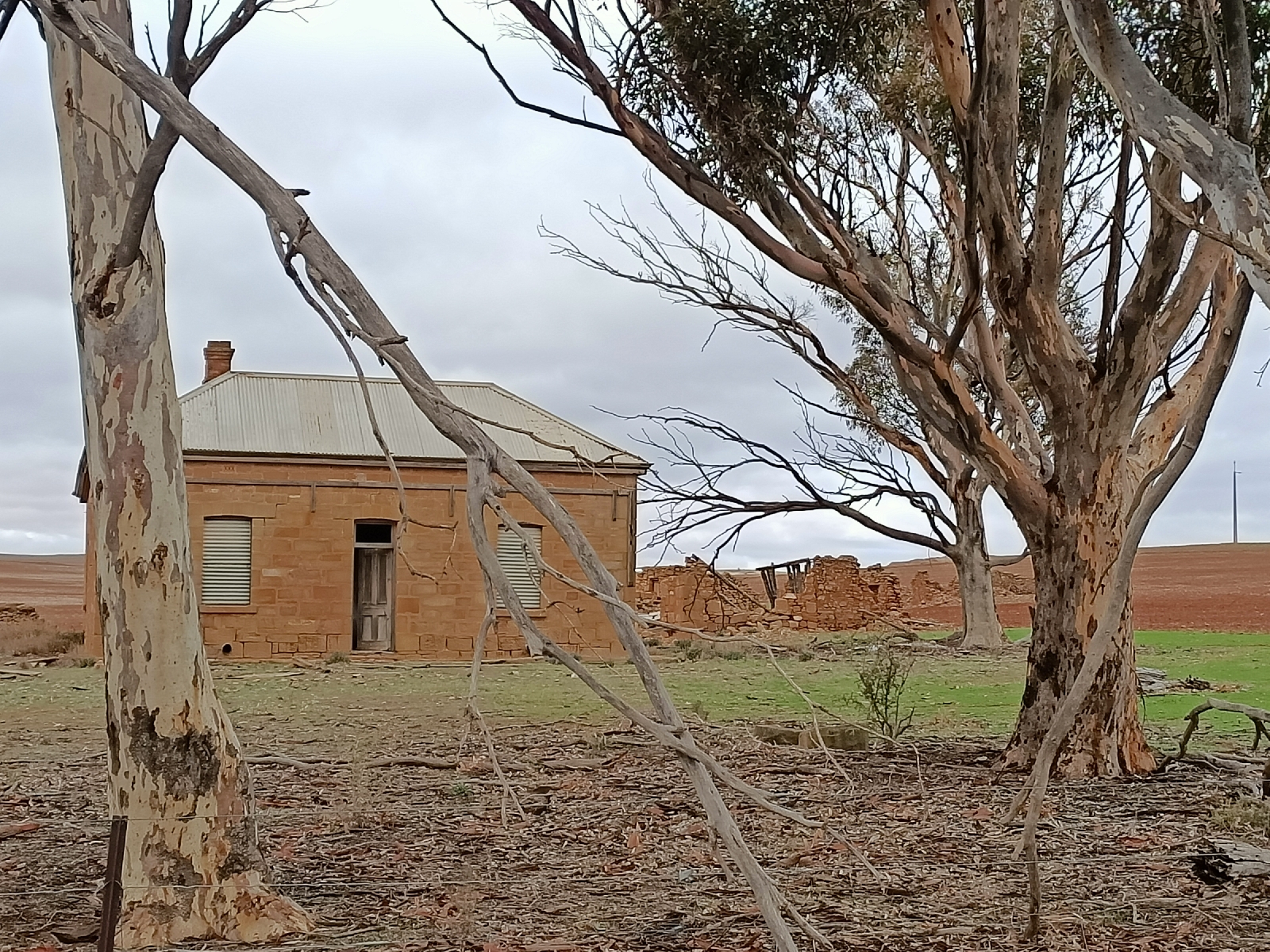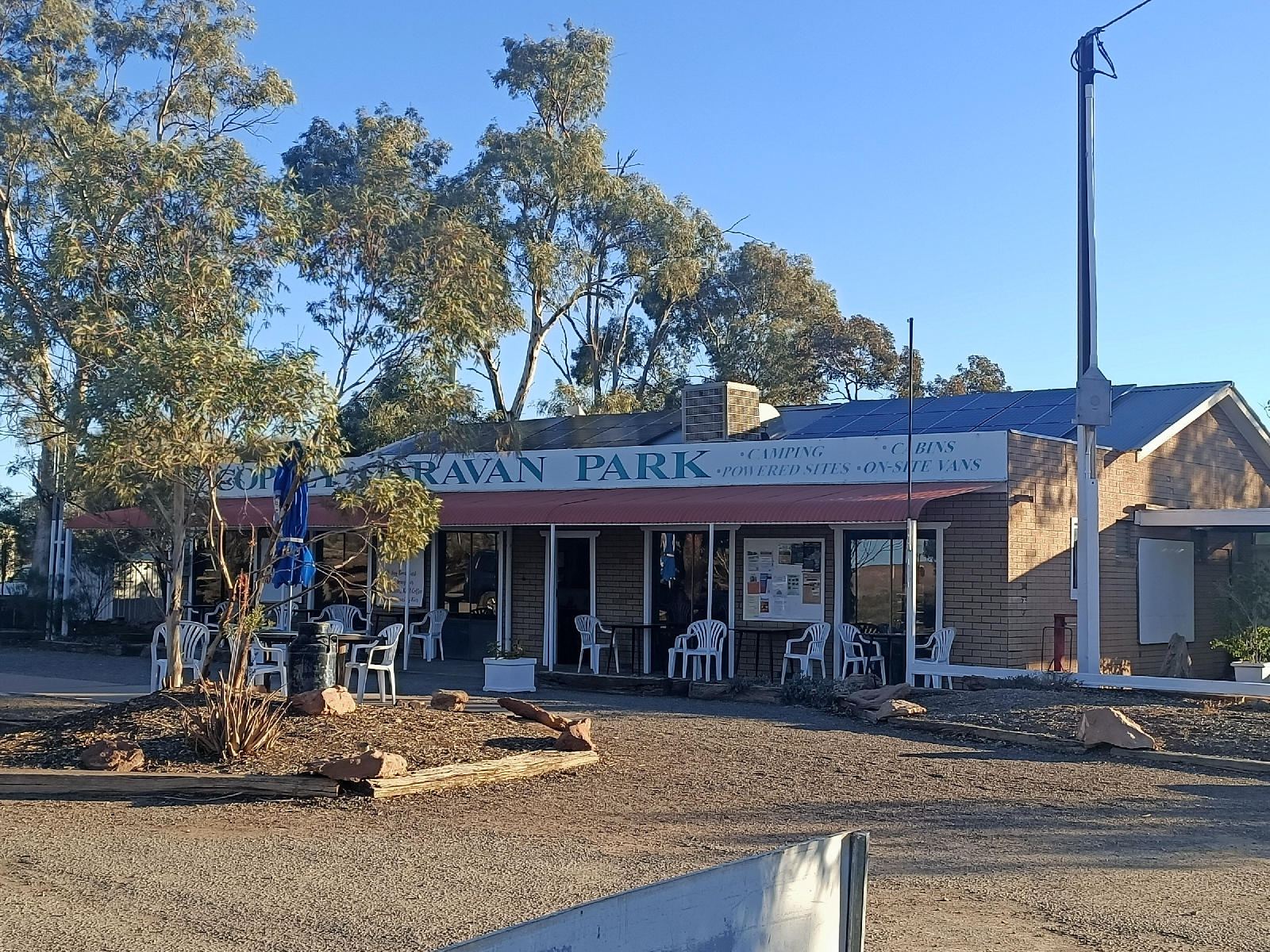Orroroo, the town without fuel, due to a leakage in the underground storage tanks. The nearest fuel available is at Peterborough, 36 km away. The pumps have now been taken away, and by the look of the run down garage new fuel tanks may never happen. People in Orroroo are not happy.
Orroroo is a prosperous country town, and the main street boasts two hotels, three cafes, grocery store, pharmacy/ news agent, clothes shop, butchers shop, grocery store, PO, and numerous related farm shops. Plus a camping ground. A bustling town, with lots of people about.
The town also has beautiful houses, although the gardens are looking a little bedraggled due to the prolonged drought.
There is an area school which caters for primary and secondary students. The oldest building, a one roomed classroom built in 1880, had one teacher for 150/180 students. From a teacher's point of view I cannot begin to think how hard that must have been.
Another room was added in 1920. The original building is now the Community Library and the added on room is the administration offices.
The Blacksmith's Charter, established in 1880, was a blacksmith, wheelwright, and agricultural machinery/manufacturing business. Now a Conference Centre and Restaurant.
An abandoned building since 1971, but was once a successful butter factory that exported butter to the United Kingdom.
A rusty old tractor plus a few other very old pieces of farm machinery.
The camping ground is on the hill overlooking the golf course, picnic area and swimming pool. When we were here in 2020 the area was very green. Not so now. But there is hope that the drought has now finished, and it is possible to see a little bit of green on the hillside.
Yesterday we went for a circular drive, partly on bitumen and partly on a dirt road.
The highlight was an old town called Pekina, with European settlement starting in 1846. As well as farming the township became a stopping point between Blinman and Burra. The main settlers were from Germany and Ireland, and the district was nicknamed 'Vatican Valley' due to its Roman Catholic heritage.
The Catholic Church in the photo above, has a hall and a statue of Mary which was part of the Rosary walk, I think.
I think this house may have been the Presbytery, but not really sure. It was next to the church.
The old store.
The hotel! Still open too.
There were a few other old buildings, still occupied, and an historic animal pound.
The town, like so many other places, suffered with drought, rust and locusts, in the 1880s. Amazingly it never fell into complete ruin. The Irish and German settlers were a tough lot, I think.
Another abandoned house
Not all the seeds were blown away with the topsoil during the strong wind in May. The recent rain has germinated these seeds.
The large grain field, with damp soil.
A monument to remember Goyder, the surveyor who developed the Goyder line in 1865. His line, which ran through most of South Australia, delineated the difference between land that would receive enough rainfall to make farming viable and land that would be unviable due to persistent droughts. And he proved to be correct, even though people did not believe him at first.
The Pekina Creek Reservoir was one of the earliest irrigation schemes in Australia. It was built about 1910 and irrigated farms around the area so they could grow lucerne. The lucerne was then used to feed cows on the dairy farms ( the connection with the butter factory in Orroroo). But as usual a prolonged drought meant the water level dropped considerably, and then a thunderstorm in 1947 filled the water with silt. In 1973 the reservoir was abandoned.. Now it is a very brown lake.
Tomorrow we travel home. Piper will be happy, although perhaps not as she will be having a very big wash. Today she rolled in something nasty and now smells, even though I gave her a wash in our little bathroom. She is currently lying on my bed and I can still smell the pervading perfume.
And hopefully the number of dead kangaroos on the side of the road will ease, once we are away from the Flinders Ranges. We did not count them between Copley and Orroroo but there must have been at least 100. There was one dead emu. Emus are faster then kangaroos and perhaps smarter. No dead goats although five goats decided to stop in the middle of the road. Luckily we stopped too. They only moved when I pressed the horn.
It has been a lovely trip, and interesting too, so important to stop and investigate places instead of racing past.










































